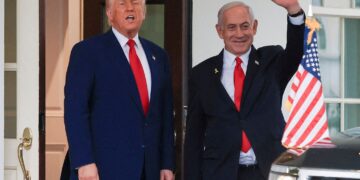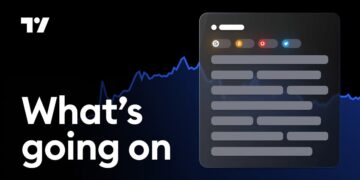Stocks have nearly recovered all their losses since President Trump’s April 2 tariff announcements. But Wall Street strategists aren’t confident the rally will keep pushing higher.
“Unlike at the [market] lows, there is much less ‘bad news’ priced into the market, while the current outlook remains highly uncertain,” Truist co-CIO Keith Lerner wrote in a note to clients on Monday. “There is less of a buffer should markets receive some bad news.”
Since the stock market bottomed on April 8, the S&P 500 (^GSPC) has risen 11.5%, the Nasdaq Composite (^IXIC) has gained about 14.4%, and the Dow Jones Industrial Average (^DJI) is up about 7.7%. President Trump’s 90-day tariff delay on April 9 sparked the rally.
But as stocks have drifted higher since then, equity strategists have pointed out that the market narrative hasn’t changed much.
Uncertainty around tariff policy remains rampant. The outlook for corporate earnings is still muddled. And economists argue the possibility of a US recession has been rising. This could mean stocks don’t have much more upside until another catalyst emerges.
Read more: The latest news and updates on Trump’s tariffs
Morgan Stanley chief investment officer Mike Wilson wrote in a note to clients on Sunday that he sees the S&P 500 trading in a range of 5,000 to 5,500 in the near term. Wilson believes a tariff deal with China that “materially” brings down the effective tariff rate could be what is needed to push the benchmark index above 5,500 for a sustained period. Interest rate cuts from the Federal Reserve —assuming they aren’t driven by economic data that indicates risk of recession — and upward revisions to earnings could also power stocks higher.
“Until we see clearer risk-on shifts in these factors, range trading is likely to continue,” Wilson said.
After two years of debating how much higher the bull market could run, equity strategists now believe the risks in the stock market are likely to the downside.
On Tuesday, HSBC became the 12th Wall Street research team tracked by Yahoo Finance to cut its S&P 500 year-end target since the start of Trump’s trade war. Five of those firms see the S&P 500 ending the year essentially flat from current levels or lower.
HSBC head of Americas equity strategy Nicole Inui cut her S&P 500 year-end target to 5,600 from a prior forecast of 6,700. Inui recommended clients position their portfolios “defensively” amid the risks of higher inflation, slower growth, and possibly a recession.
















